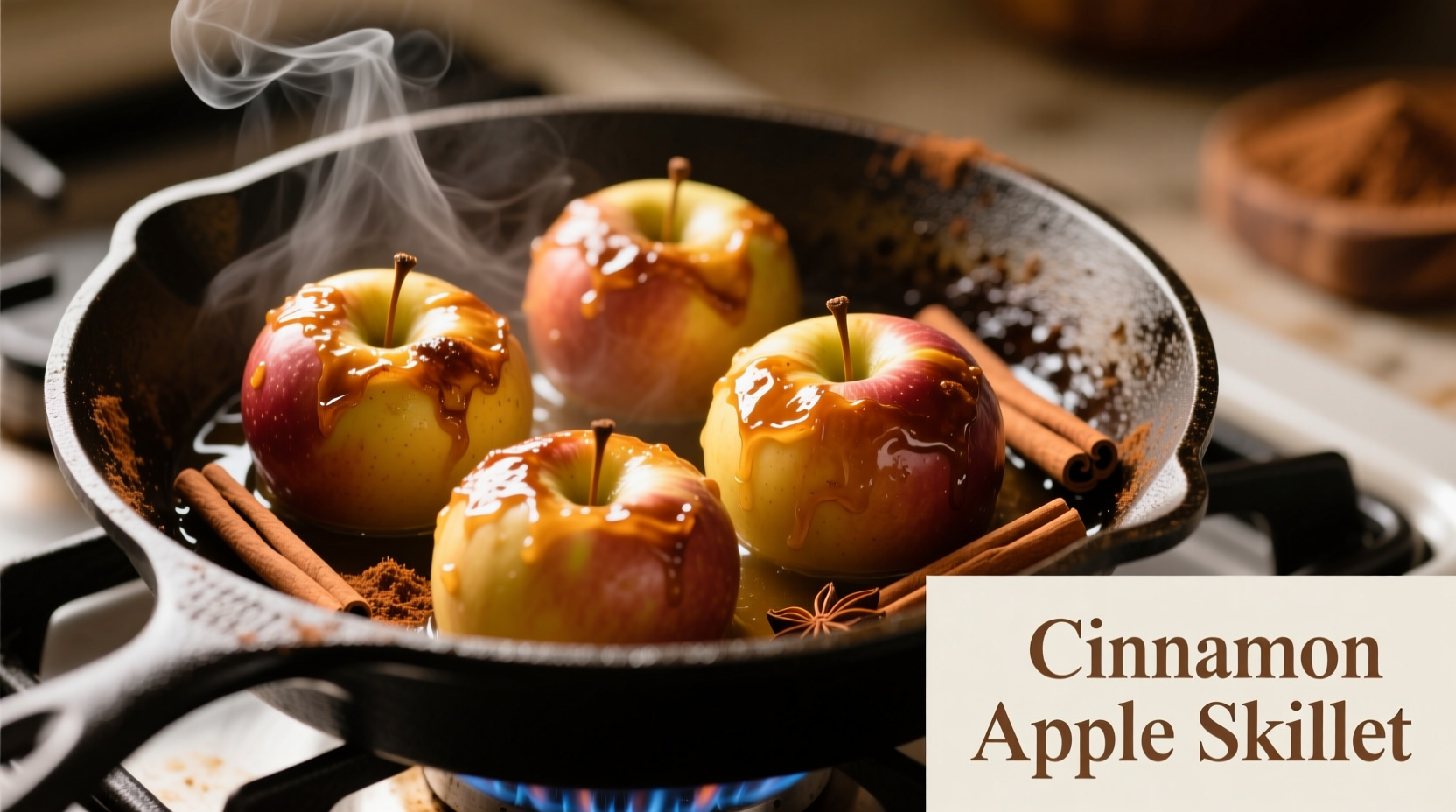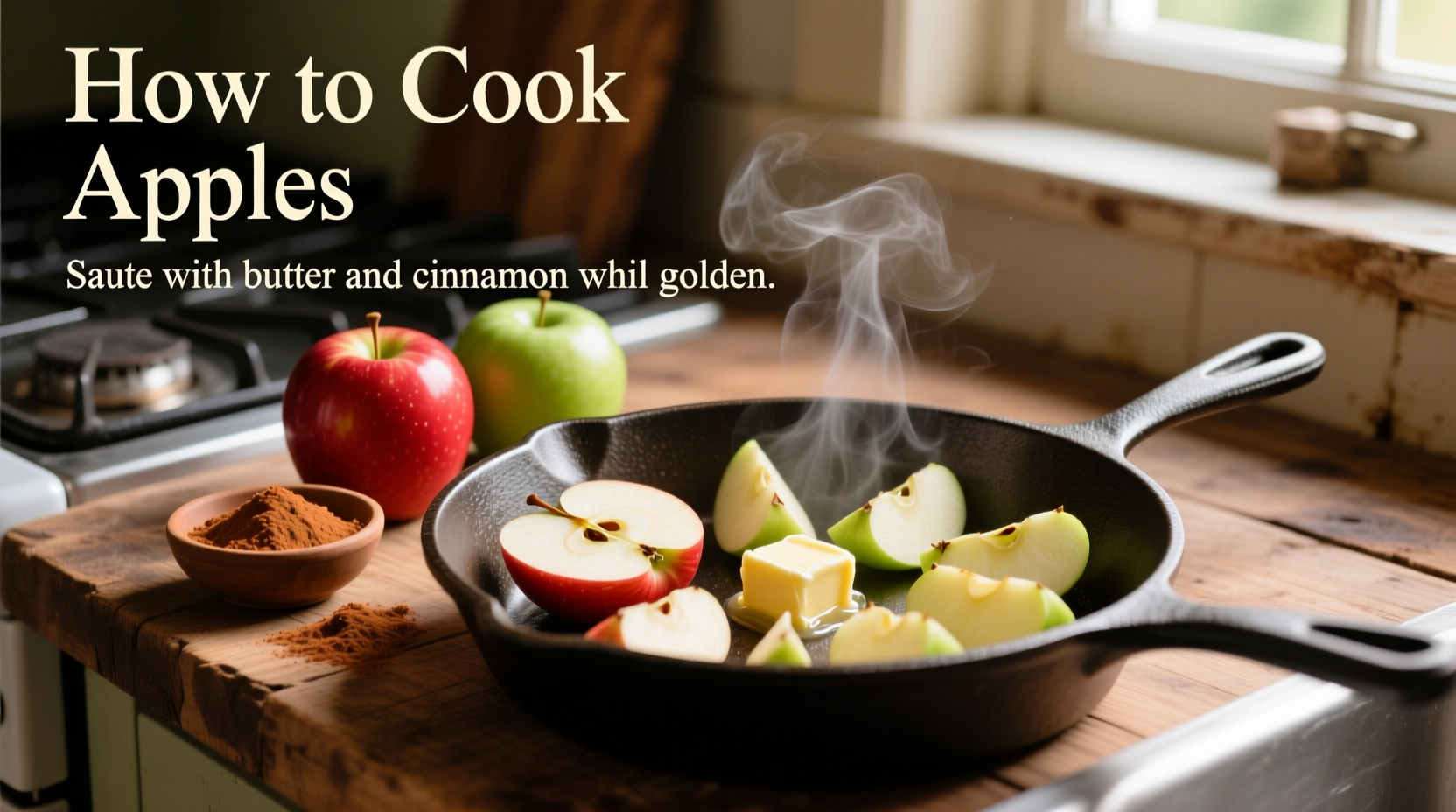Discover how to transform ordinary apples into culinary delights with these professional techniques. Whether you're preparing breakfast, dessert, or savory dishes, mastering apple cooking opens endless possibilities in your kitchen. This guide reveals five reliable methods plus expert tips that home cooks and seasoned chefs use to achieve perfect results every time.
Understanding Apple Varieties for Cooking
Not all apples behave the same when cooked. Choosing the right variety makes the difference between mushy disappointment and perfectly textured results. Tart varieties generally hold their shape better, while sweeter apples break down more readily.
| Apple Variety | Best Cooking Method | Texture Result | Sweetness Level |
|---|---|---|---|
| Granny Smith | Baking, Tarts | Firm, holds shape | Tart |
| Honeycrisp | Sauteing, Pies | Semi-firm, juicy | Balanced |
| Golden Delicious | Stewing, Sauces | Soft, breaks down | Sweet |
| Braeburn | Roasting, Crisps | Firm to semi-firm | Sweet-tart |
This comparison comes from research by the University of Minnesota Extension, which has studied apple varieties for culinary applications since 1907. Their findings help explain why certain apples perform better with specific cooking techniques.
Essential Preparation Techniques
Proper preparation sets the foundation for successful apple cooking. Follow these professional steps before applying heat:
- Cleaning: Wash apples thoroughly under cool running water, scrubbing gently with a produce brush
- Peeling decision: Leave skins on for baking or roasting (they become tender), peel for sauces or delicate dishes
- Preventing browning: Toss cut apples immediately in 1 tablespoon lemon juice mixed with 1 cup water
- Cutting consistency: Slice to uniform thickness (1/4-1/2 inch) for even cooking
Five Reliable Cooking Methods
1. Stovetop Sautéing (Quick Method)
Ideal for breakfast dishes or quick desserts, sautéing creates caramelized edges while maintaining apple structure.
- Heat 1 tablespoon butter or coconut oil in skillet over medium heat
- Add 2 cups apple slices and 1/4 teaspoon cinnamon
- Cook uncovered for 5 minutes, stirring occasionally
- Cover and cook additional 3-5 minutes until tender-crisp
- Add 1-2 tablespoons liquid (water, apple juice, or rum) if sticking occurs
Professional tip: Add a pinch of salt during cooking to enhance natural sweetness without making dishes salty.
2. Baking/Roasting (Oven Method)
Perfect for hands-off cooking that develops deep flavors through slow caramelization.
- Preheat oven to 375°F (190°C)
- Toss 4 cups apple chunks with 1 tablespoon maple syrup and spices
- Spread in single layer on parchment-lined baking sheet
- Bake 25-35 minutes, flipping halfway through
- Test for doneness: Apples should pierce easily with fork but hold shape
3. Simmering/Stewing (Sauce Method)
The traditional approach for applesauce and compotes with controlled texture.
- Combine 4 cups sliced apples, 1/2 cup liquid (water or juice), and spices in saucepan
- Bring to gentle simmer over medium heat
- Cover and cook 10-15 minutes, stirring occasionally
- Uncover and cook additional 5-10 minutes for thicker sauce
- Adjust consistency with additional liquid or cooking time
4. Microwave Method (Fastest Option)
Surprisingly effective for single servings with minimal cleanup.
- Place 2 cups apple slices in microwave-safe dish
- Add 2 tablespoons water and desired spices
- Cover with microwave-safe lid or paper towel
- Microwave on high for 4-6 minutes
- Stir and check tenderness, adding 1-minute increments as needed
5. Grilling/Broiling (Special Occasion)
Creates dramatic flavor through caramelization and smoky notes.
- Preheat grill or broiler to medium-high
- Toss apple wedges with neutral oil to prevent sticking
- Grill 3-4 minutes per side until grill marks appear
- Finish with glaze (balsamic reduction works beautifully)
- Serve immediately while warm
Apple Cooking Timeline: A Historical Perspective
Understanding how apple cooking evolved helps appreciate modern techniques. This timeline from the USDA National Agricultural Library shows key developments:
- 1600s: Early American settlers brought apple varieties specifically for cooking and cider production
- 1800s: Apples became staple dessert ingredient as ovens became common in households
- 1920s: Introduction of electric stoves allowed more precise temperature control for apple dishes
- 1950s: Microwave technology began changing quick cooking methods
- Present: Modern varieties bred specifically for dual-purpose (eating and cooking) applications
Common Cooking Mistakes and Solutions
Avoid these frequent errors that ruin otherwise good apple dishes:
- Mistake: Overcrowding the pan Solution: Cook in batches for proper caramelization
- Mistake: Adding sugar too early Solution: Wait until apples have softened slightly (about 5 minutes in)
- Mistake: Using only one apple variety Solution: Combine 2-3 varieties for complex flavor and texture
- Mistake: Not adjusting liquid based on apple moisture content Solution: Start with less liquid and add as needed
Creative Applications for Cooked Apples
Move beyond traditional pies with these professional applications:
- Breakfast: Fold stewed apples into oatmeal or yogurt
- Savory dishes: Pair roasted apples with pork or duck
- Preserves: Freeze cooked apples in portions for quick future use
- Texture variations: Partially cook apples for crisps, fully cook for sauces
Professional chefs often create "apple confit" by slowly cooking apples in butter and spices until deeply caramelized, then using them as a sophisticated accompaniment to meats.

Storage and Food Safety Guidelines
Proper storage maintains quality and safety of cooked apples:
- Refrigerate cooked apples within 2 hours of preparation
- Store in airtight container for up to 5 days
- Freeze for longer storage (up to 12 months)
- Reheat thoroughly to 165°F (74°C) before serving leftovers
According to the FDA Food Code, cooked fruits like apples should be treated as potentially hazardous foods requiring proper temperature control.
When Cooking Methods Won't Work
Understanding limitations prevents kitchen disasters:
- Overripe apples: Won't hold shape for baking or sautéing (better for sauces)
- Very crisp apples: Require longer cooking times than softer varieties
- High-altitude cooking: Requires adjustments to liquid and cooking time
- Older apples: May have developed internal browning not visible externally
Perfecting Your Technique
Mastering apple cooking comes with practice and attention to detail. Start with one method that matches your immediate need, then experiment with others as you gain confidence. Remember that small adjustments in timing, temperature, and ingredient ratios create dramatically different results. The best cooks develop an intuitive sense for when apples have reached their ideal texture through visual and tactile cues rather than strict timing.











 浙公网安备
33010002000092号
浙公网安备
33010002000092号 浙B2-20120091-4
浙B2-20120091-4